Data security checklist in Africa is the starting point for any organisation building distributed teams. It proves you have thought about governance, technology and behaviour, and that you can protect customer data while scaling operations. With the right controls, remote teams in Africa deliver quality, speed and value without raising risk. Workforce Africa helps companies put structure around this, embedding controls from day one so your auditors and customers are confident.

Why Data Security Checklist in Africa Matters
Customers, partners and regulators expect strong controls wherever work is done. A clear data security checklist in Africa shows you have mapped risks, assigned responsibilities and aligned with internationally recognised standards. It also turns security into routine habits, not ad hoc fixes, which is critical when teams work from multiple locations.
Governance and Legal Foundations in the Data Security Checklist in Africa
Begin with the principles. Map processing to lawfulness, fairness, transparency, purpose limitation, minimisation, accuracy, storage limits, integrity, confidentiality and accountability. Align South African operations with POPIA security safeguards and breach notification duties, and note that Kenya’s Data Protection Act requires registration of certain controllers and processors. Document international transfer mechanisms such as adequacy, standard contractual clauses or binding corporate rules where relevant. This governance layer anchors every other control in the data security checklist in Africa.
Access Control and Zero Trust in the Data Security Checklist in Africa
Adopt least privilege and verify every request. Multi factor authentication, contextual checks on device posture and just in time privilege help prevent lateral movement. A zero trust architecture treats every network as untrusted, continually authenticates users and devices, and authorises access to specific resources rather than broad network segments. Capture these patterns in policies and automate enforcement wherever possible. This is a core plank of offshore data security in Africa.
Device, Network, and Location Controls for the Data Security Checklist in Africa
Standardise company managed devices with full disk encryption, secure configuration baselines, auto patching and remote wipe. Enforce private connectivity through modern VPN or secure access service edge, disable split tunnelling for sensitive roles, and block storage to unmanaged USB media. Log device inventory and health so exceptions are visible. These technical measures align with ISO guidance for establishing and maintaining an information security management system.
Secure Workflows and Data Handling in the Data Security Checklist in Africa
Design workflows to collect only what is needed, keep it accurate, restrict reuse and delete on schedule. Mask personal data in routine views, use role based access to reveal full records only when justified, and encrypt data in transit and at rest. Build data maps that trace sources, systems and destinations so teams know exactly how information moves. These practices apply the core principles to day to day work and reduce breach impact.

Monitoring, Logging, and Incident Response in the Data Security Checklist in Africa
Centralise logs from identity, endpoint, network and application layers. Define alerts for unauthorised access attempts, privilege changes and data exfiltration patterns. Maintain a tested incident response plan with roles, timelines and communication templates. In South Africa, operators and responsible parties must implement appropriate safeguards and notify the regulator and affected individuals when a compromise occurs. Capture these requirements in your runbooks for remote workforce security to Africa.
Vendor Management and Workforce Assurance in the Data Security Checklist in Africa
Assess suppliers for security posture, regulatory alignment and sub processor transparency. Require contractual controls for confidentiality, breach notification, audit rights and secure disposal. For application suppliers, check alignment to the OWASP Top Ten and evidence of regular testing. Maintain a living register of vendors, risks and mitigation actions. This supplier discipline is central to cybersecurity offshore to teams that integrate multiple platforms.
Training, Culture, and Continuous Improvement in the Data Security Checklist in Africa
People keep data safe when expectations are clear and practiced. Run induction and quarterly refresh training, reinforce with simulated phishing, and coach leaders to model secure behaviour. Track completion and effectiveness metrics and fold lessons into procedures. Update your data security checklist in Africa as threats change and as regulators issue new guidance.
Why Workforce Africa
Workforce Africa designs compliant operating models, combining Employer of Record coverage, background checks, controlled tool access and audit friendly documentation. The team installs shared dashboards, quality assurance and service reviews so security and performance are visible. Guidance on permanent establishment risk, payroll and employment status helps you expand without hidden exposure while keeping your data security checklist in Africa current and defensible.
How to Start Your Data Security Checklist in Africa in Four Weeks
Set outcomes, pick locations and run a structured pilot with a small pod. Workforce Africa will shortlist leaders, implement device and identity controls, align policies to GDPR, POPIA and local rules, and help you test incident response. After the pilot, scale by replicating the model and embedding ISO style continual improvement so offshoring ROI grows alongside assurance. Use the same template for customer operations, finance and data teams to keep the data security checklist in Africa consistent across functions. Schedule a free consultation today!






